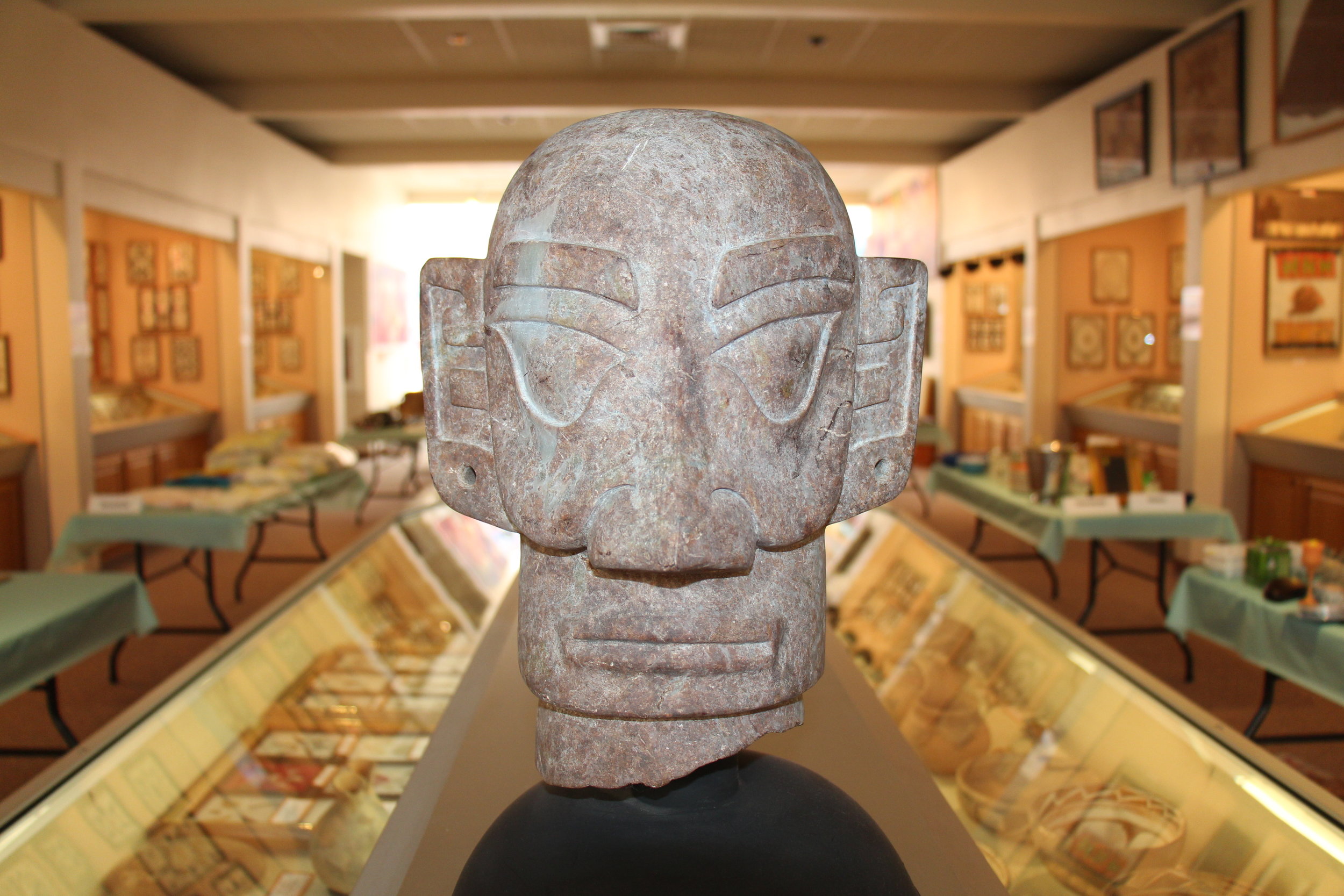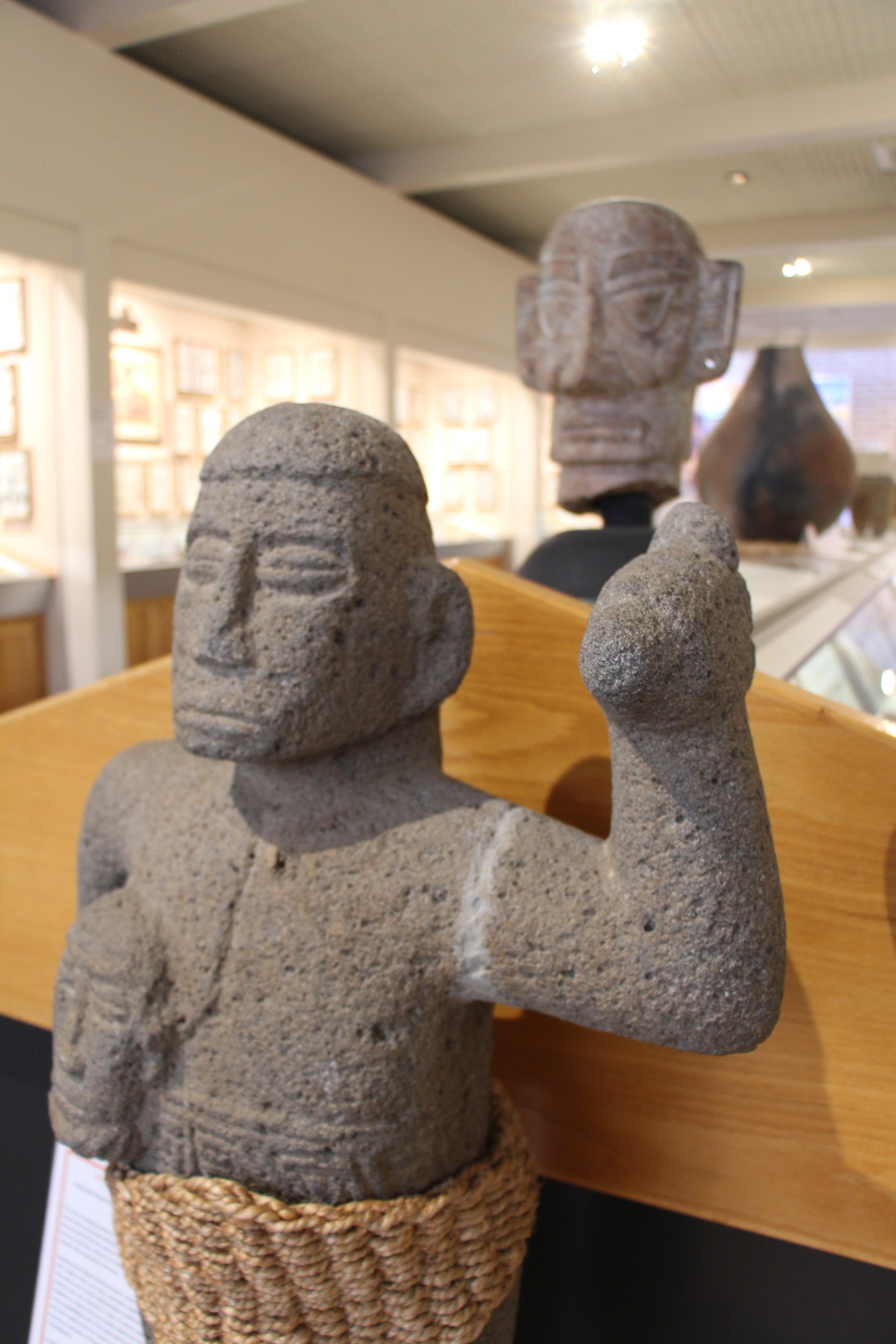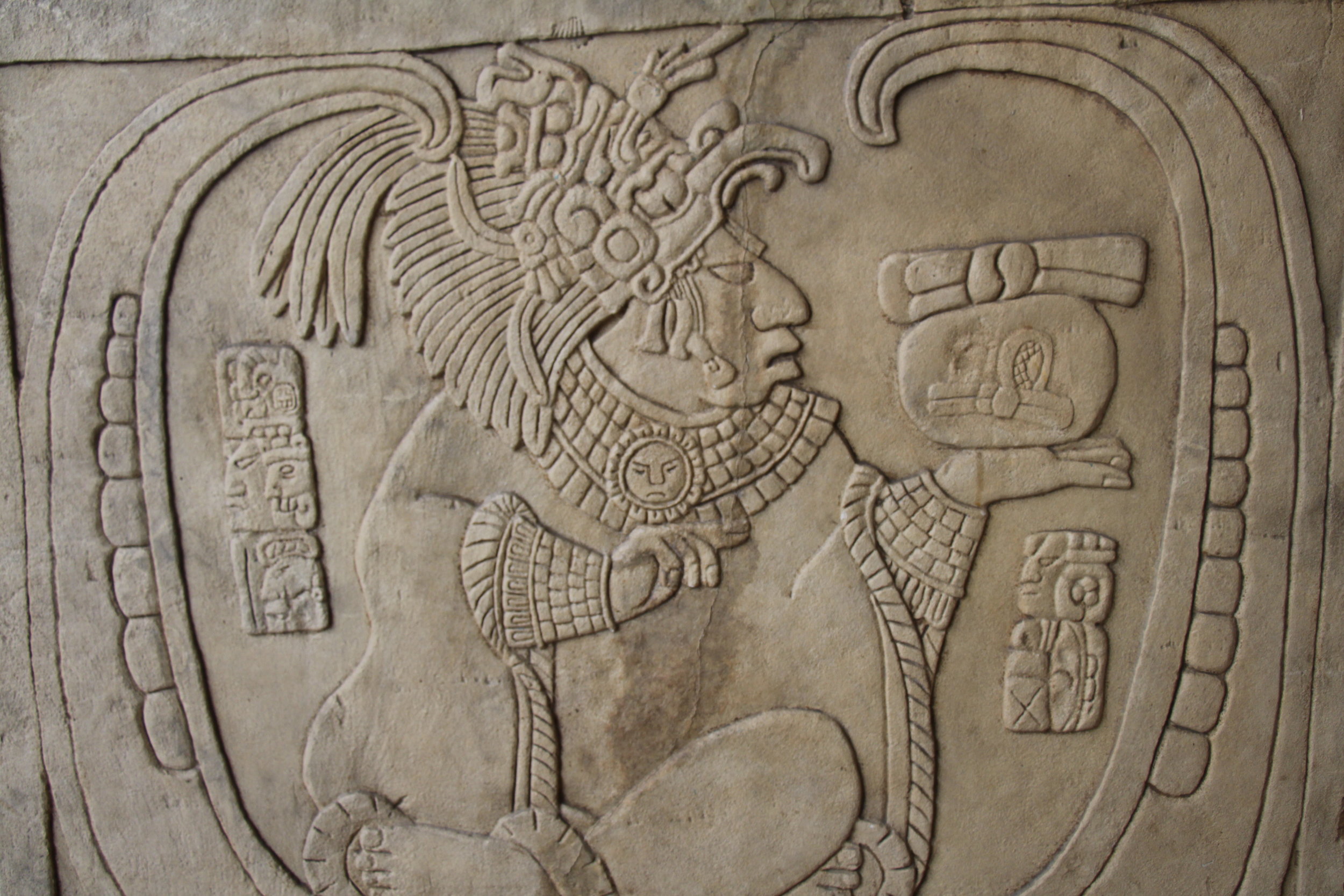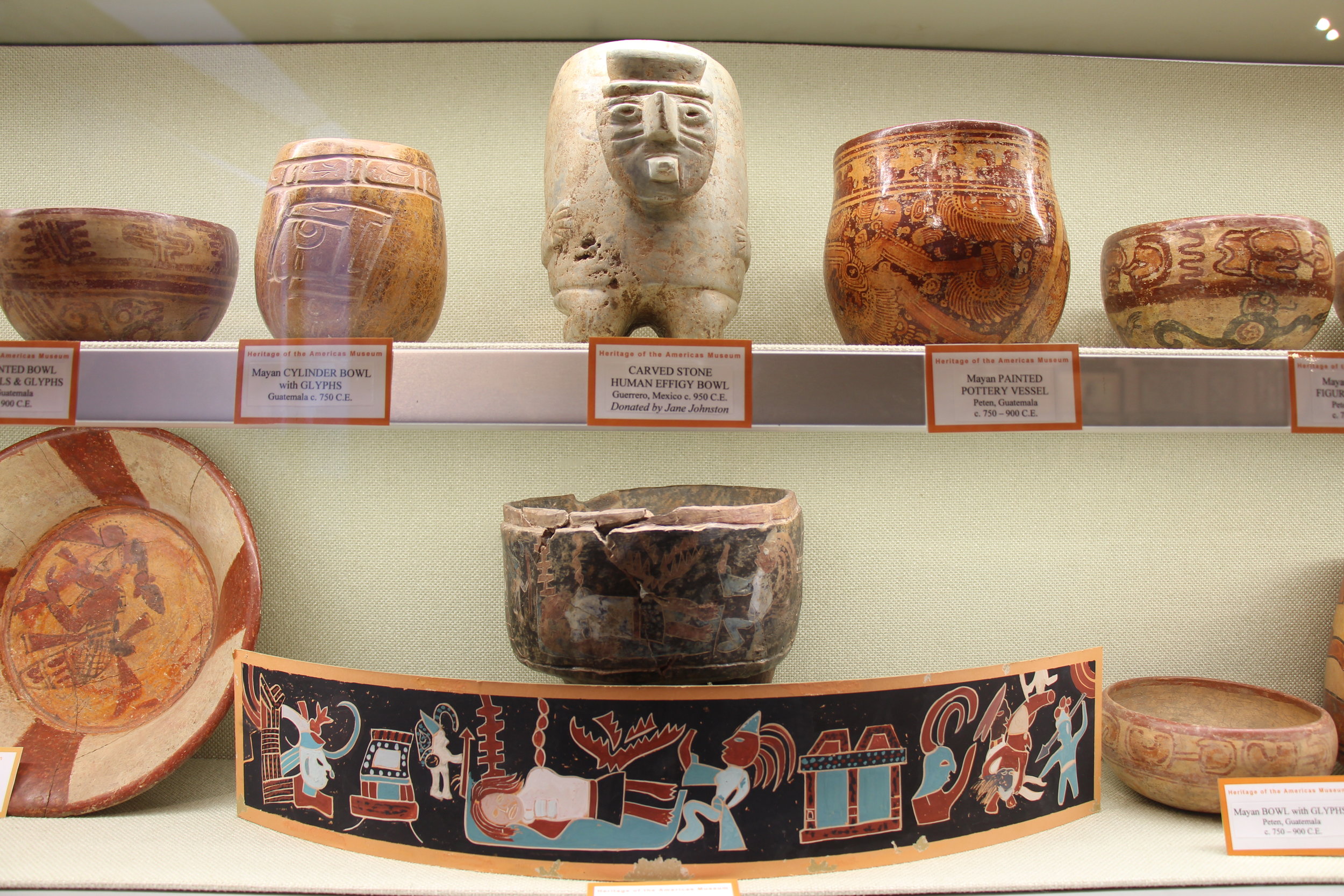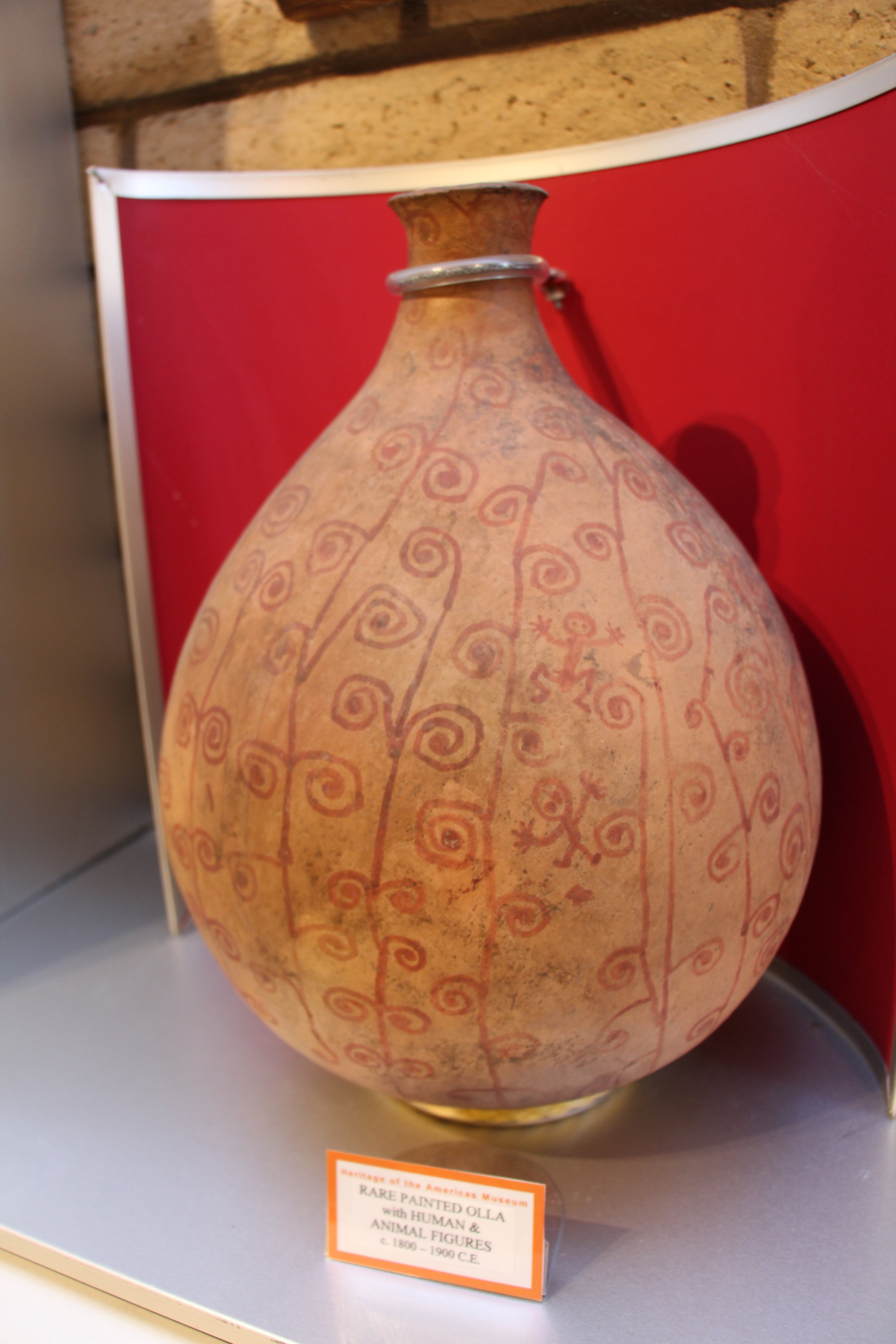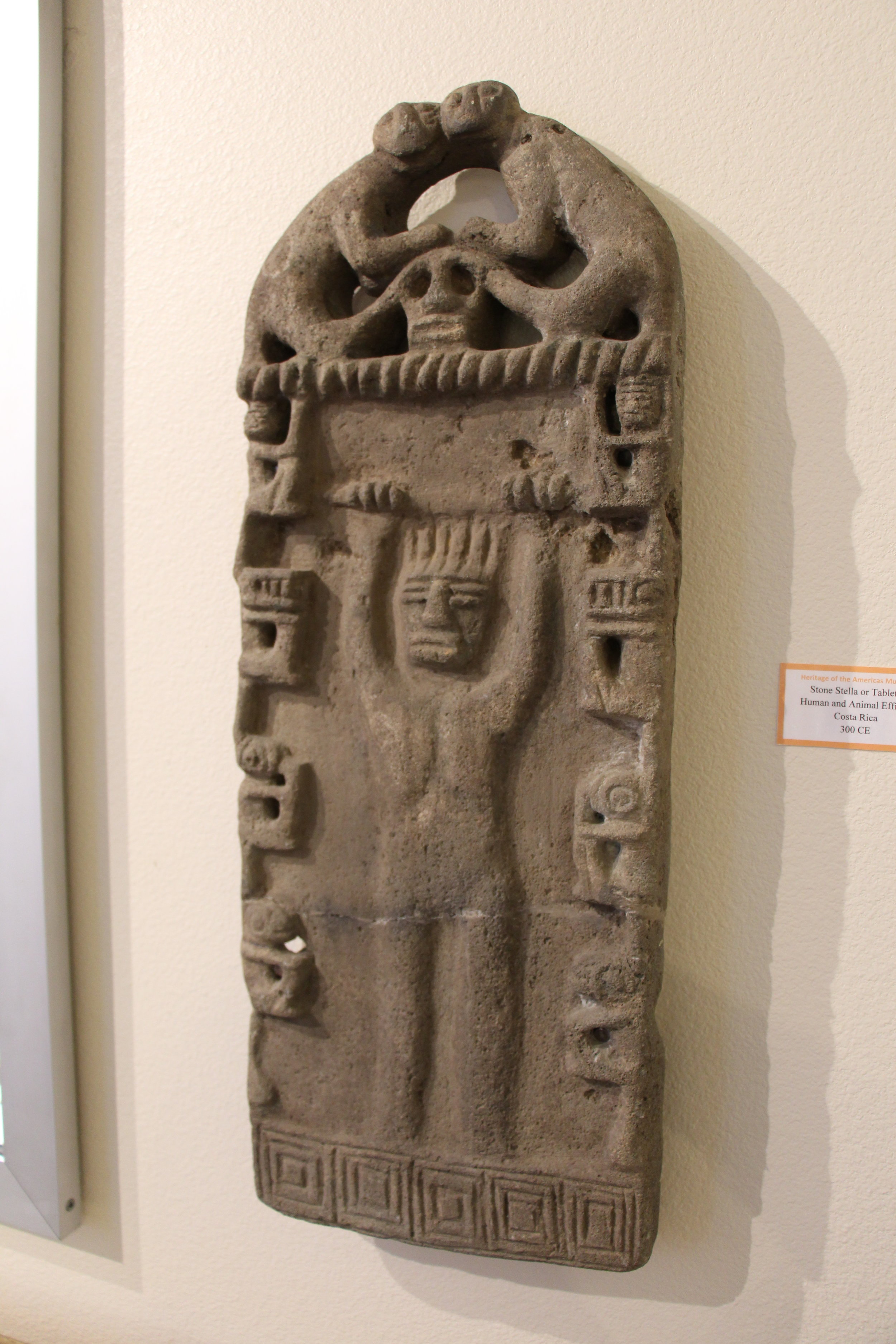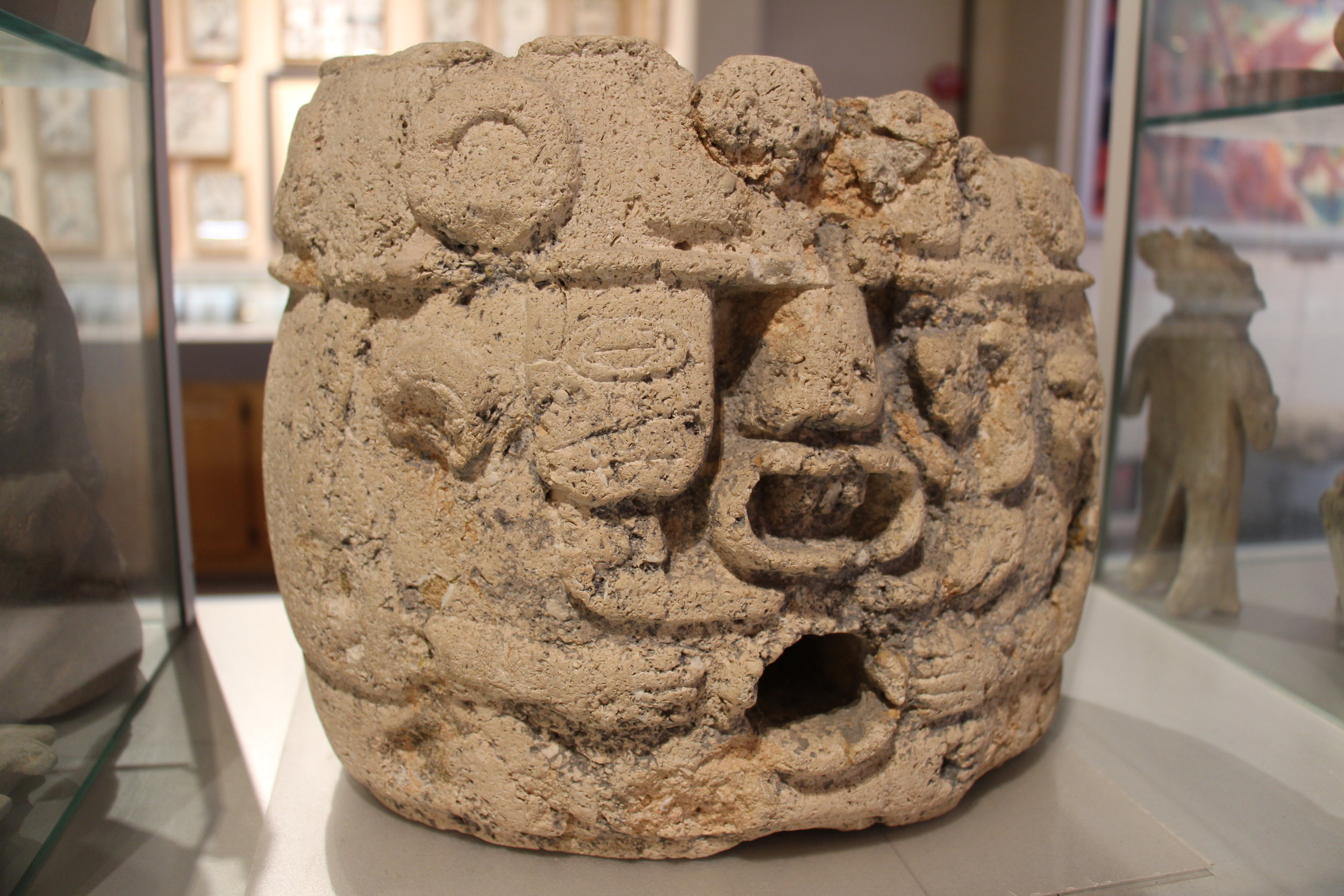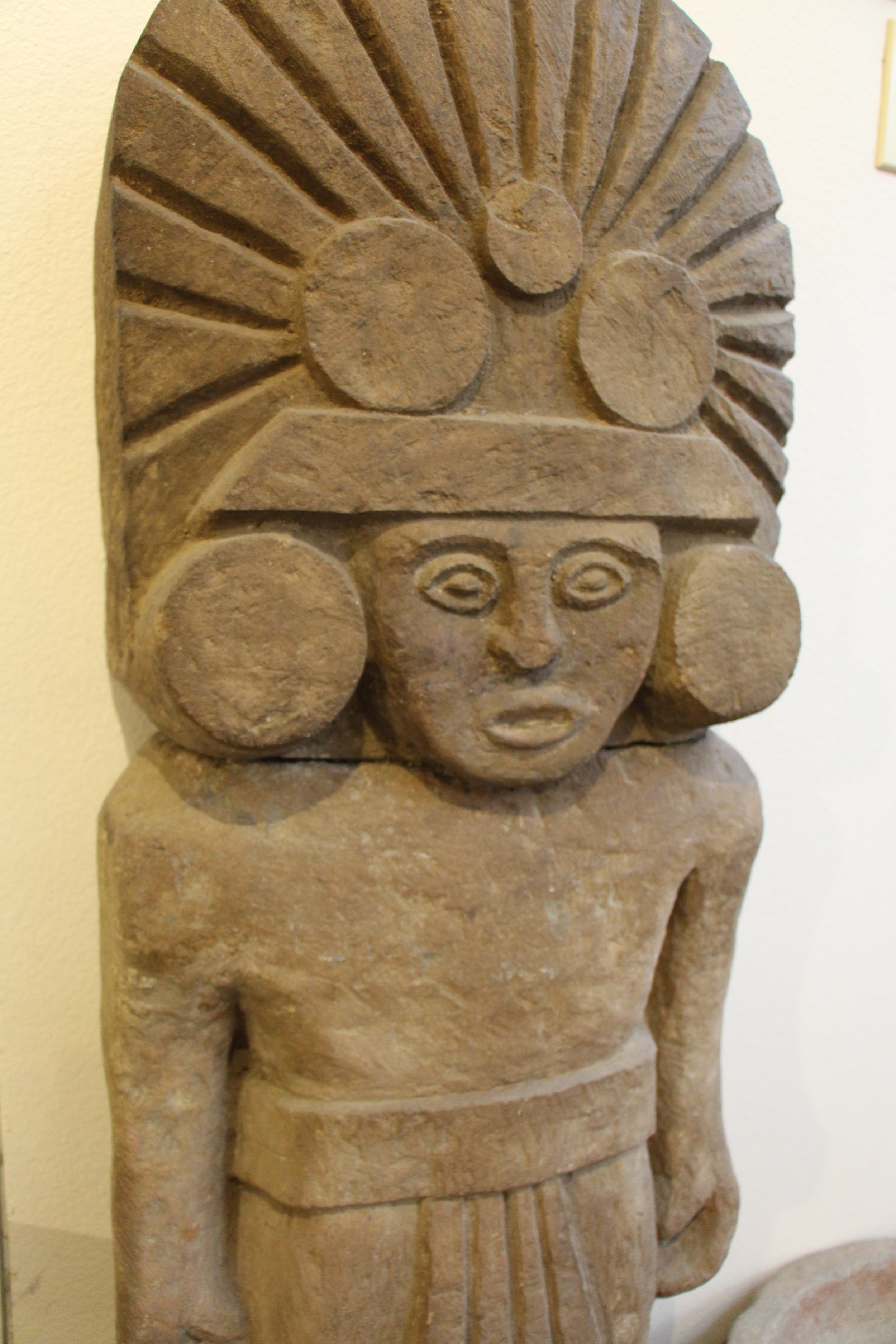As you enter the Archaeology Wing, you will be welcomed by an Olmec Stone Figure (500-600 BCE). The display below of the Olmec Pottery Mask and Hands is a wonderful example of the fine craftsmanship of the Mesoamerican people. This wing gives us clues to how Native Americans lived before the arrival of Europeans in the 16th century. You will then approach the earliest found Paleo points which were instrumental in hunting many types of early animals-even the giant mastodon. About 10,000 archaic ceremonial and projectile points are artistically displayed.
Beads of jade, stone, ivory, shell, gold, silver, copper and pottery range in age from 600 BCE to 1200 CE can be found throughout the wing.
Tribal cultures of the Americas are represented with displays of pipes, pottery, stone axes and decorative prehistoric beads and ornaments. The pyramid-building cultures of the Maya and Indians of the Mexican mainland are well represented. Peru is a source of the most exotic prehistoric artifacts in the Western Hemisphere. The arid climate of Peru is responsible for the incredible preservation of cultural material that allows visitors to gain perspective on how the people of Peru once lived. There is also an extensive collection of artifacts from Teotihuacan. At the end of the wing, there are murals by Mona Mills depicting the life of the Kumeyaay before 1492, as well as a collection of Kumeyaay artifacts.


